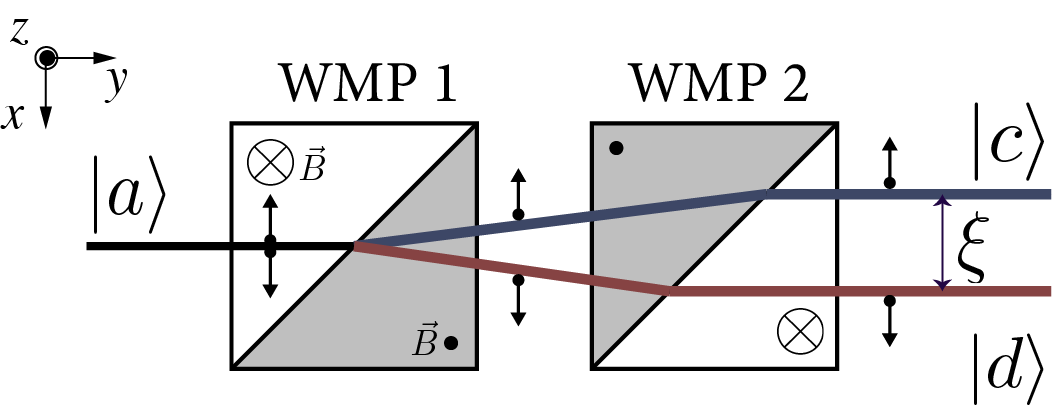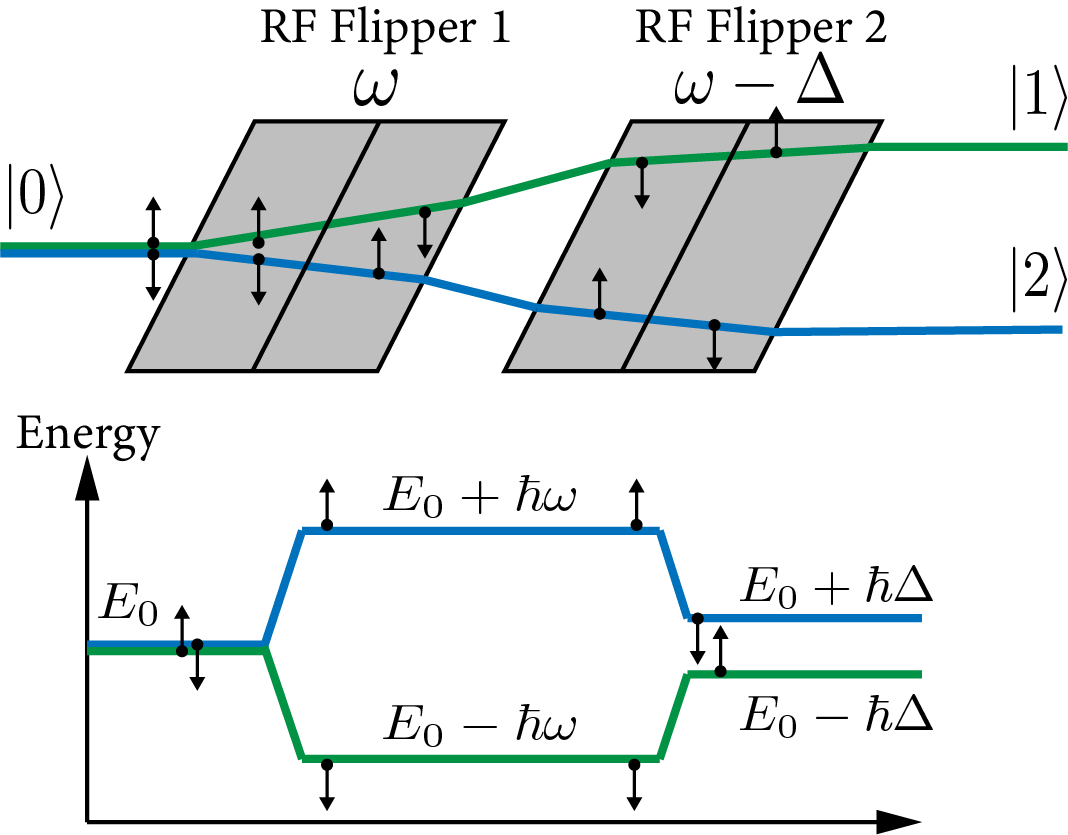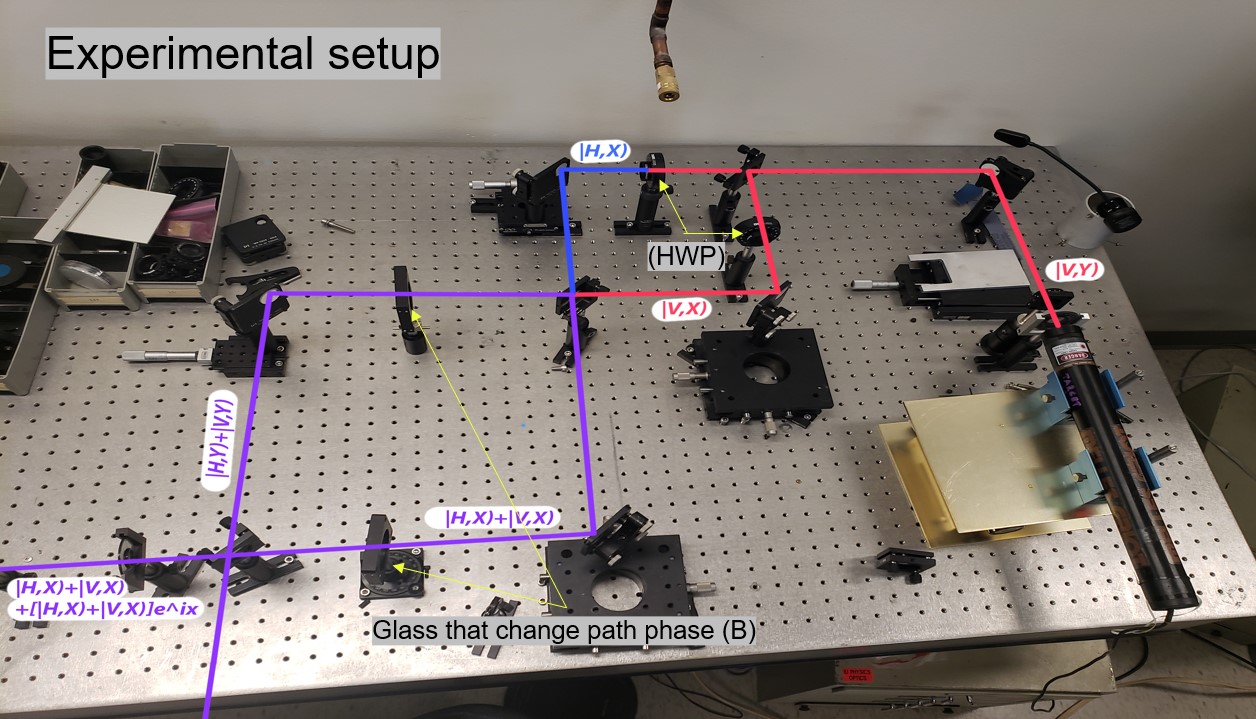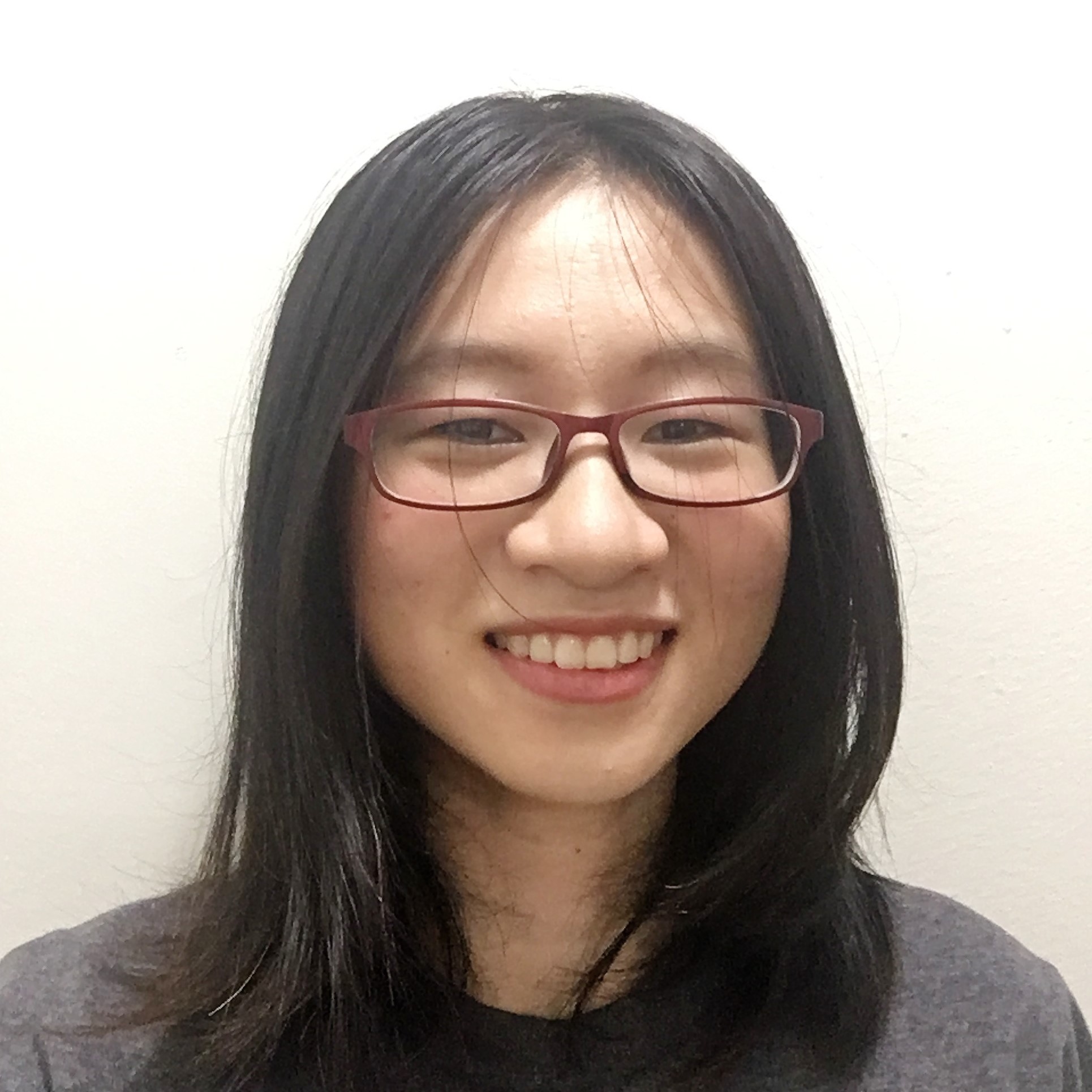Research
Multimode-Entangled Single-Neutron Interferometry
August 2016 – April 2020
Conventional neutron interferometry, employing devices constructed from large perfect single crystals of silicon, has been used to explore various foundational aspects of quantum mechanics. Although neutron spin-echo devices are often viewed in terms of Larmor precession of the neutron spin, under special physical conditions, the action of these devices is more suitably interpreted in terms of neutron interferometry and quantum entanglement.
I developed an operator-based description of two types of multimode-entangled single-neutron quantum optical devices: Wollaston prisms and radio-frequency spin flippers in inclined magnetic field gradients. This treatment is similar to the approach used in quantum optics, and is convenient for the analysis of quantum contextuality measurements in certain types of neutron interferometers.
 |  |
|---|---|
| The magnetic Wollaston prism pair | The radio-frequency spin flipper pair |
I described operationally the way multimode-entangled single-neutron states evolve in these devices, and provided expressions for the associated operators describing the dynamics, in the limit in which the neutron state space is approximated by a finite tensor product of distinguishable subsystems.
I designed entangled-neutron interferometers to measure entanglement witnesses for the Clauser, Horne, Shimony and Holt, and Mermin inequalities, and compared the theoretical predictions with our recent experimental results.
We view this work as a necessary first step towards a theoretical description of entangled neutron scattering from strongly entangled matter.
Publications
- Shufan Lu, A. A. M. Irfan, J. Shen, S. J. Kuhn, W. M. Snow, D. V. Baxter, R. Pynn, and G. Ortiz. Operator analysis of contextuality-witness measurements for multimode-entangled single-neutron interferometry. Phys. Rev. A 101, 042318 (2020). arXiv: 1912.10282.
- J. Shen, S. J. Kuhn, R. M. Dalgliesh, V. O. de Haan, N. Geerits, A. A. M. Irfan, F. Li, Shufan Lu, S. R. Parnell, J. Plomp, A. A. van Well, A. Washington, D. V. Baxter, G. Ortiz, W. M. Snow and R. Pynn. Unveiling Contextual Realities by Microscopically Entangling a Neutron. Nat. Commun. 11, 930 (2020). arXiv: 1908.09823.
- S. J. Kuhn, S. McKay, J. Shen, N. Geerits, R. M. Dalgliesh, E. Dees, A. A. M. Irfan, F. Li, Shufan Lu, V. Vangelista, D. V. Baxter, G. Ortiz, S. R. Parnell, W. M. Snow and R. Pynn. Neutron State Entanglement with Overlapping Paths. Phys. Rev. Research 3, 023227 (2021). arXiv: 2012.11786.
Solving Lights Out and Asteroids Puzzles using Grover’s Algorithm
November 2020
Grover’s algorithm is a quantum algorithm that is used to solve unstructured search problems. By implementing oracle and diffuser blocks repeatedly, the amplitude of the target quantum state can be significantly amplified.
In November 2020, I participated in the IBM Quantum Challenge and designed Grover circuits with quantum Random Access Memory (qRAM) to search for solutions to the Lights Out Puzzles and Asteroid Puzzles. My submission ranked top 10% among 2000 participants based on the quantum costs.
Two-Mode-Entangled Single-Photon Interferometry
January 2021 – December 2021
This project is a photon experimental equivalent version of the Multimode-Entangled Single-Neutron Interferometry project. It is one of the optical lab setups we developed for the Modern Optics course for senior undergraduate students.
We built a single-photon entanglement interferometer with two layers of Mach–Zehnder Interferometer based on the paper by Gadway, Galvez and De Zela. We also designed the data acquisition system with Arduino and Microsoft Excel Data Streamer.
 |
|---|
| Illustration of the experimental setup |
Decoherence in Mirror Reflection of Two-state Neutron Superpositions with Strong Absorption
Work in Progress
The theory of single-particle entangled neutron scattering from entangled degrees of freedom in condensed matter is under development. By the optical theorem of scattering theory, entanglement-dependent effects in nonforward scattering must also appear at some level in the forward direction, which is the domain of neutron optics. I have been taking steps toward this development and applying them in neutron-antineutron oscillations under mirror reflection conditions.
